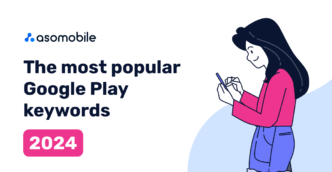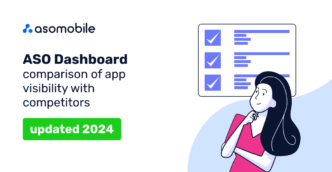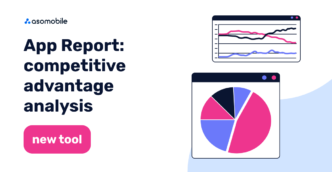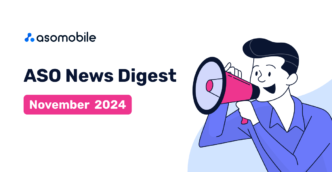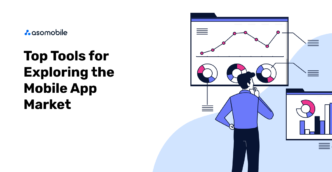How do I launch an app on the App Store?
Let's start our investigation in question - how do I launch an app on the App Store?
Realize how firmly mobile phones have become a part of our routine and have embraced wide areas of life, far away from the function of calls and communication. Food ordering, travel, social services, shopping, business, accounting, and appointment with a doctor - and this is just a small part of what we implement through smartphones. There is a whole pool of applications for each of these needs. And it will be logical not to miss this wave, but to use it to promote your business, implement ideas, and your own projects.
This is how applications are born - from ideas and needs.
So, your app is already developed, tried, and tested. You have come a long way from the idea and MVP of the project, through the documentation, mockups, and implementation in the form of an apk. As soon as you see the light at the end of the tunnel, a new challenge arises - the release of the application on stores.
At the end of the article, you can find a 40% discount coupon for the first month of using ASOMobile - a tool for creating ASO and researching competitors in the mobile app market.
Let's dwell on how to launch a mobile app on the App Store. After all, as the reporting shows, Google Play is far ahead of the App Store in terms of downloads, but users of the iOS platform spend more.
Let's start by making sure you're signed up in the Apple Developer Program, and that your app meets Apple user's interface and specifications guidelines.
App development in Xcode using SwiftUI.
Let's dwell in more detail at the stage of app development - the recommendation measure for the App Store is to develop an app when using Apple products. A good example would be Xcode development with SwiftUI using the latest iOS SDK. Xcode 13 is currently available to download - with ready-made iOS UX / UI elements, such as the bottom navigation bar and a dark theme. You can download Xcode without signing up in the Apple Developer Program. But to test and release the app, you will need to sign up in the developer program.
This is a good practice because by using the mentioned products, you are guaranteed that when the app is released, it will smoothly go through the process of moderation from the App Store.
Apple Developer Program - registration to launch an iOS app on the App Store.
To use the full range of Apple products for developers freely, and for the release of your application in the App Store, you need to sign up with the Apple Developer Program. This way, you will have access to all services and special features, as well as be able to launch your app and count on its further support.
The cost of participating in the developer program is $ 99 per year. It should also be borne in mind that when monetizing your app (through in-app purchases or subscriptions, you can receive from 70 to 80% of all incomes. Unfortunately, it is impossible to avoid paying a membership fee. But, as we mentioned in the report on the mobile app market, iOS apps developers earn more than Android apps.
Test your app before release.
Test your app with real users before release. We recommend that you take advantage of Apple opportunities and use TestFlight - you will have up to 10,000 real users at your disposal. With this service, you can split users into groups and test different builds of your application, assign roles, and share testing information. Receive reports, screenshots, and information from users while using your application - all this will be available on the TestFlight page.
Development, testing, release.
Let's take a closer look at the process of launching an application on the App Store.
- Decide on the build version of your application.
Of course, you can download several builds of your application for each version, but you only need to select one and associate it with the version of the application that you launch on the App Store. You can change your build selection at any time before submitting your version of the app for moderation.
- Pricing policy for your application.
Define the pricing characteristic of your application. If your application is free, you can choose not to choose an end date - but if in the near future you are going to change prices or transfer your application to the paid category, it is better to decide on the time range at this stage.
- The territory of availability of your application.
So, at this stage, the geography of your app's availability is determined. It is possible to select All - all regions and countries, so your application will be available all over the world. It may seem like a good idea, but if you are aimed at a small local market (for example, cleaning services in your city, in several cities in your country), then it is worth limiting the availability of the application at this point.
- Application metadata and keywords.
Before making an app release, it is worth paying attention to optimizing it for the App Store. All the details, life hacks, and tips on how to make text and visual optimization correctly and quickly can be found in this article of our blog.
As a reminder, ASO optimization of an iOS app includes the following app metadata fields:
- Title: application name, up to 30 characters;
- Subtitle: subtitle of the application, up to 30 characters;
- Keyword fields are fields visible only to application developers. A technical field, 100 characters long, in which relevant keywords are written, without spaces, separated by commas, in separate phrases.
The rest of the metadata fields can be filled in without regard to optimization since they are not indexed.
P.S. don't forget about additional locales!
- Upload visual elements - an icon and screenshots of your app.
Visuals are responsible for conversions and are worth your attention. They introduce your user to the application or game, their main advantages, interface, and design.
- Submit the application for verification - moderation.
And here is almost the last effort to launch your app on the App Store. Passing moderation on the app store is quite a demanding task since Apple is quite scrupulous about the content of its app store. All of them pass a fairly strict selection for compliance with the rules of the placement site - app errors, non-compliance with design and development requirements, violations of privacy or security policy - all those and much more can cause a refusal to launch an application on the App Store.
Do not forget about the possibility of a delayed launch of the app - you can schedule a specific release date by uploading all the necessary information in advance. It means there are two options to launch - immediately after approval or postponed to a specific date.
Immediately after the application is sent for verification, its status will be changed to “Awaiting verification”. If you have any issues that require clarification or correction, please contact the Support Center at Apple. After fixing bugs and problems, you submit your application for reconsideration. Launching to the App Store is made in 24 hours after it is approved.
- What to do after the iOS app is released?
You have successfully launched the iOS app! But the way to success is not over. Now you continue to develop your application, update and improve it. The same applies to its optimization. Start by localizing your app to other countries to achieve global reach.
Work with keywords, track their dynamics. Watch competitors and their actions, follow niche trends.
Work with reviews - this is a direct link between the developer and the app users.
Mobile analytics tools to grow your application
To simplify further work with the app, we recommend using the mobile analytics tool - ASOMobile.
A great option would be the App Keywords analytics section, where you can monitor the keywords by which your competitors are indexed.

Also, use a visual comparison tool - as noted above, conversion is an icon and screenshots of your app. How much you stand out from the competition, how well the niche trends are followed, and get an overall picture of the store in one click.

It is easy to evaluate the quality of your application optimization, further ways of its development and improvement - all on one page of the ASO Dashboard tool.


As you can see, launching an app on the store is quite a responsible task, but following the instructions and without missing out on details, you can easily release your application. And its further success is the result of continuous work, optimization, and improvement.
 Українська
Українська  Русский
Русский  Español
Español 